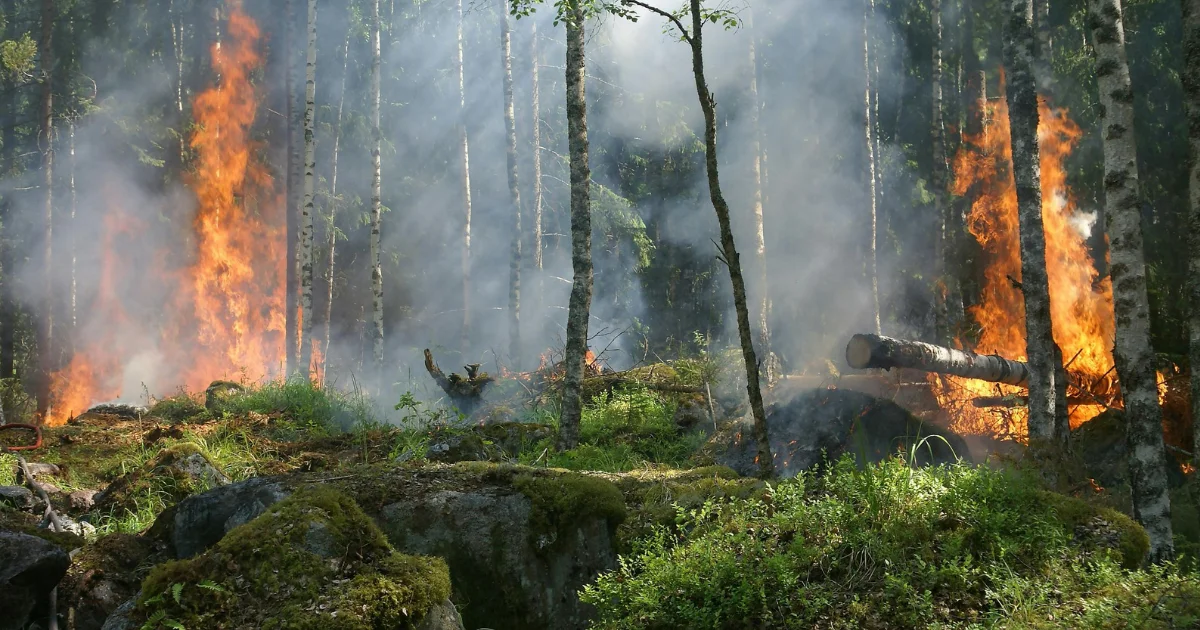Table of Contents
ToggleHow Forests Fight Heat
Forests are among the Earth’s most powerful tools for combating rising heat. They regulate temperatures, influence weather patterns, and provide a natural cooling effect critical to life on our planet. In this article, we will examine the ways forests fight heat and why their preservation is vital in the face of climate change.
Forests Absorb Carbon Dioxide
Carbon dioxide (CO2) is a major contributor to global warming, and forests act as massive carbon sinks. Trees absorb CO2 during photosynthesis, reducing the amount of this greenhouse gas in the atmosphere. This process helps mitigate the heat-trapping effects of CO2, slowing global warming.
Forests Provide Natural Shade
Forests block direct sunlight with their dense canopy, reducing heat absorption by the ground. This shading effect cools the air and lowers surface temperatures, creating a comfortable habitat for plants, animals, and humans.
Forests Release Cooling Water Vapor
Trees release water vapor through a process called transpiration. As water evaporates from leaves, it cools the surrounding air, similar to how sweating cools the human body. This evaporative cooling is particularly significant in tropical rainforests, which act as natural air conditioners for the planet.
Forests Drive Rainfall and Cloud Formation
Forests play a critical role in maintaining rainfall patterns. The moisture they release into the atmosphere contributes to cloud formation, which reflects sunlight and lowers surface temperatures. Rainfall further cools the land and supports ecosystems dependent on water.
Forests Reduce Urban Heat Islands
In cities, the absence of vegetation can lead to the “urban heat island” effect, where concrete and asphalt retain and radiate heat. Urban forests and parks help counteract this by providing shade, releasing moisture, and absorbing heat, making cities more livable.
Forests Store Heat-Stabilizing Carbon
Trees and soil in forests store large amounts of carbon that would otherwise contribute to warming. Preserving forests prevents this carbon from being released, stabilizing global temperatures over the long term.
Forests Reflect Solar Energy
While forests absorb some heat, they also reflect a portion of the sun’s energy back into space. This reflection, combined with their cooling processes, balances their impact on the Earth’s overall temperature.
Why Forest Conservation Matters
The destruction of forests through deforestation and degradation releases stored carbon into the atmosphere, intensifying global warming. Protecting and restoring forests is essential to reducing heat and combating climate change.
Benefits of Forest Conservation
Climate Stability: Healthy forests regulate the global climate by absorbing CO2 and stabilizing temperatures.
Biodiversity: Forests provide habitats for countless species, many of which are essential to ecological balance.
Human Well-Being: Forests improve air quality, supply fresh water, and provide resources for millions of people worldwide.
How You Can Help Forests Fight Heat
Plant Trees
Participate in local tree-planting initiatives or support organizations focused on reforestation. Planting even a single tree contributes to cooling the planet.
Support Sustainable Practices
Choose products made from sustainably sourced materials and avoid items linked to deforestation. Look for eco-friendly certifications like FSC or Rainforest Alliance.
Reduce Carbon Emissions
Lower your carbon footprint by conserving energy, using public transportation, and opting for renewable energy sources. Less CO2 means forests have less to absorb.
Advocate for Forest Protection
Encourage policymakers to implement laws that protect forests and support afforestation projects. Advocate for global action on deforestation and climate change.
Raise Awareness
Educate your community about the importance of forests in fighting heat and mitigating climate change. Collective action starts with informed individuals.
Relevant post: An Impressive How Trees Help to Keep Our Planet Cooler in 2024
Other Relevant: Cooling the Planet with Plants
Conclusion
Forests are nature’s frontline defense against rising heat and climate change. From absorbing carbon dioxide to cooling the air through transpiration, their role in regulating global temperatures is irreplaceable.
Protecting forests is not just an environmental priority—it’s a necessity for our survival. By taking action now, we can harness the power of forests to fight heat and create a sustainable future for generations to come.




